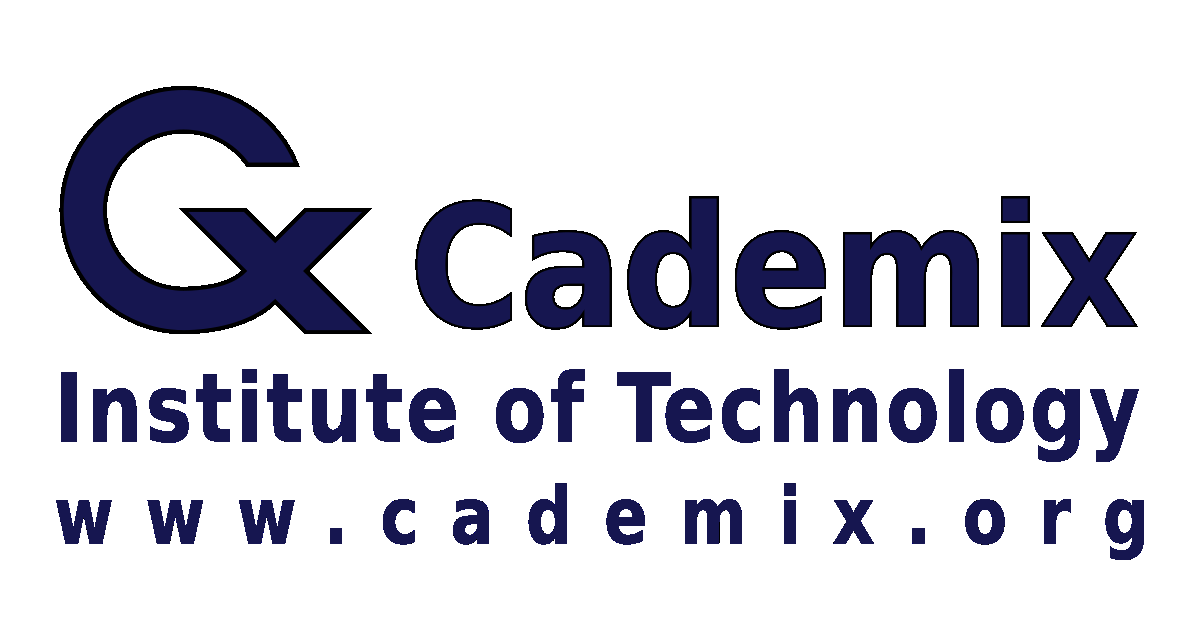By Karima Aboukal, R&D Project Assistant, Cademix Institute of Technology
In the context of Marketing, Agile means establishing a marketing strategy in which teams work collectively to accomplish projects within a short timeline.

Agile Marketing is a necessity as we begin 2021. Remember, we are currently in a fast-paced unpredictable world. Therefore, the static and slow approach of traditional management is rather becoming insufficient. It can further slow down the innovation process.
Agile management is the most important advancement in the IT industry. In recent years, the agile approach is growing and starting to move to non-IT sectors. Indeed, there is considerable evidence that the implementation of agile practices and principles can help other industries. Specifically, it reduces workflow conflicts, encourages collaboration, and ensures continual improvement.
So, here are the questions. First, what is the Agile Management Approach? Second, what does it mean in the context of Marketing? Third, what are its benefits? and finally, how can it be implemented?
I – Agile Management Approach
Agile is a project management approach that advocates collaboration, iteration, and incrementalism. It is said to be agile because it considers both the initial requirements and those generated by future changes.
Agile project management offers a number of major benefits. It permits great flexibility and adaptability to any possible future changes. The frequency and regularity of exchanges reinforce relationships of confidence and cooperation between the team and the client. It also enhances real-time visibility of project progress. In addition, after each step, the team takes stock of the budget to continue, suspend, or cancel certain tasks, or even the project which results in an effective cost control.
The 12 principles of the Agile Approach (Agile Manifesto)
- Customer satisfaction is at the top priority by delivering consistent valuable results.
- Openness to requests and adjustments even in late development.
- Frequent deliveries in iterations within a short amount of time.
- Projects are designed around people who are motivated and can be trusted.
- Face-to-face communications are preferred as they are richer and efficient.
- Delivery of operational elements is the primary indicator of progress.
- Constant cooperation and collaboration between businesspeople and developers.
- Sustainable development, team’s ability to constantly adapt to changes.
- Simplicity, to minimize unnecessary work.
- Continuous focus on technical quality and good design.
- Self-organized and autonomous teams for better performance.
- Regular adaptation of methods and processes to improve productivity.
The 4 Values of the Agile Manifesto

Adapted from https://www.productplan.com/glossary/agile-manifesto/
II-Agile Marketing
In the context of Marketing, Agile means establishing a marketing strategy in which teams work collectively to accomplish projects within a short defined timeline. Team members use data and analytics to find solutions to problems in real time, deploy tests, evaluate results, and make rapid changes. It’s about quickly following the results of their efforts and repeat them. Then, improve them over time to boost productivity and profitability.
The iterative process of the Agile approach allows for the possibility to identify any problems or unmet needs as early as possible and correct them by the means of repeating a process until the desired result is achieved. The idea is to develop a first functional version of a component of the product. It doesn’t have to be perfect, but to be exploitable by users in order to be tested in real conditions, and then to be improved.
Multiple Marketing campaigns can be run and various new ideas can be implemented simultaneously following a well-functioning Agile Marketing strategy.
Benefits of running the Agile Model in Marketing
Agile adoption and digital transformation can have a major influence on the production timeline, the efficiency of the input, the quality and efficacy of the output which translates into better outcomes for customers.
Since methods change rapidly these days, a fixed marketing plan for more than 6 months is now impossible to develop. Marketing platforms (Google, social networks, e-mail, etc.) are continually changing, as are user preferences. Agile marketing allows you to quickly adapt to all the changes related to your market, in order to remain competitive and to sustain your business.
This strategy has many advantages for attracting prospects, retaining your customers, and improving your marketing costs. Some of the major benefits are:
Better internal communication and Transparency
Agile marketing transforms communication within your teams. The daily meetings allow each member to know the tasks of the others and their progress. In addition, daily check-ins prevent problems from setting in and crippling the organization. They are resolved immediately to boost team productivity.
Enhanced Performance and Improved productivity
Each marketing task warrants a different level of effort and requires personalized follow-up. Each team receives a mission, as well as the corresponding key performance indicators for a fast and efficient execution.
A competitive advantage
Completing projects on time leads to faster delivery to market, which creates a digital presence to capture the increasingly short attention spans of prospective and existing customers, resulting in better ROI and rapid business growth.
Greater adaptability to changes and Controlled marketing costs
Agile marketing is a cost-effective approach, in the short to medium term, that helps businesses produce results. It enables businesses to broaden their scope to a larger audience without exorbitant investment. Teams that embrace agile marketing typically perform regular testing to measure the results of their actions. In other words, they invest more time in strategies that prove to be successful!
Agile Marketing Implementation Steps
When implementing agile marketing strategies, the following steps/habits are essential to its success:
Select team members wisely
When creating your team, you should focus on assembling cross-functional members with diverse and relevant skills.
The most important thing in agile marketing is to bring together a small team of collaborators (between 8 and 12 people) capable of working together. Team members must have skills in multiple functions. The exact structure of the team depends on the tasks you plan to carry out.
Define Marketing Project Goals and Identify Tasks
The marketing team must have a clear idea of what they want to accomplish with their agile marketing strategy. For example, target a new segment of prospects, improve a step in the customer journey, optimize the ROI of social media strategy, or double your lead acquisition.
For personalization objectives, members should have analytical skills, knowledge of your buyers’ persona, and strong empathy.
As for business purposes, favor user experience designers, salespeople, and people who can identify who they are talking to.
This team must collaborate with other departments of the company and have a leader. The latter sets the priorities, manages the delay, identifies the necessary resources, and determines the “sprints”.
Once you have your agile marketing metrics and sprint goals set, you can now start identifying the tasks your team has to accomplish.
Quick meetings
Endless morning meetings are over! Instead, agile marketing offers 10-15 minutes daily stand-ups with the entire team. These mini-meetings provide a brief discussion of yesterday’s work, today’s plan, and setbacks to be addressed and resolved as quickly as possible to ensure project completion on time. This allows for frequent contact with each other. It helps to hold each other accountable, brainstorm solutions to issues that arise, and update each other on progress.
Teamwork
A cohesive and organized team that improves the rate and time of project completion is essential. And ensuring Transparency and Visibility of Data is important in order for team members to collaborate successfully.
Design, Run, and Analyze tests
Without more content experimenting, it will inevitably become stale, leading to long-term failure.
Agile marketing requires testing. These determine whether to modify a particular call-to-action to achieve your goal. Split your plan into a series of micro-battles that smaller teams can undertake and deliver. Frame them not as business objectives but as consumer issues to solve. We usually carry out the tests in “sprints” of one to two weeks to validate the proposed approaches.
As you work on accomplishing your sprints and completing your pending agile marketing tasks, you should make sure that you are keeping track of your velocity and the results of each accomplished task. The team must have effective and flawless monitoring mechanisms in place to quickly report the results of each test. The leader must review these to make the right decisions in a short time.
After the completion of every sprint, analyze the results and figure out if there is something that you can improve or change. Then on your next sprint cycles, your goal is to improve your processes and acquire more impactful results.
Conclusion
The main challenge, at the heart of agility, is to deliver value as soon as possible without compromising quality to satisfy the customer in an environment that is tending to become more complex (competition, uncertainty of market developments, etc.). Of course, there are project-oriented and practical programs available that quickly bring you into the topic.
Therefore, to reap the full benefits of the Agile management approach in Digital Marketing, establish an Agile cross-functional team in your business, and implement the principles and frameworks of Agile Marketing properly. Agility has to become an integral part of the corporate culture. It is no longer a preference but rather a requirement in order to scale up the success of your business faster.
Related Keywords
Agile Marketing, Agile software, Agile development, Product owner, Agile, Scrum, Software-development, Agile project, Methodologies, Agile teams, Project management, Agile software development, Kanban, Sprint, Backlog, Agile project management, User-stories, Stakeholder, Iterative.
Waterfall, Agile manifesto, Agile methods, Iteration, Agile Marketing Funnel, Agile sales, Agile team, Scrum master, Product backlog, Agile methodologies, Business value, Agile process, Collaborate, Cross functional, Agile methodology, Agile principles, Extreme programming, User story, Prioritize, Incremental, Deliverables.

